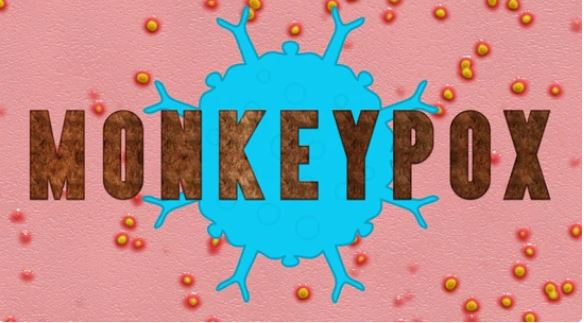
Kerala in India has been put on high alert following the detection of a second monkeypox case and the Union Health ministry ordered strict screening of all international passengers arriving at airports and ports to minimise the threat of its importation. The symptoms of monkeypox are fever, headaches, muscle aches, backache, chills, tiredness and even swollen lymph nodes while one can also notice a rash on the face and other areas of the body.
Monkeypox virus was discovered in 1958 when two outbreaks of a pox-like disease were seen in lab monkeys kept for the study and also the name was derived from them. Monkeypox virus belongs to the Orthopoxvirus genus in the family Poxviridae and is not life-threatening but there can be human-to-human transmission or animal to human transmission.
In an interview with HT Lifestyle, Dr Rituja Ugalmugle, Senior Doctor, MBBS, MD- Internal Medicine at Connect and Heal, revealed, “Typically symptoms may start within 5-13 days but can range from 3-21 days from exposure. First 2-5 days are usually characterized by fever, intense headache, back ache, muscle pains, enlarged lymph nodes and severe fatigue. Skin rash usually appears within 1 to 4 days and continues for 2-3 weeks. Typically concentrated on face, palms and soles, but may also affect oral mucosa, eyes and genitalia. Lesions are usually 2-5mm in size to begin with, then become raised and fluid or pus filled and eventually crust over. These crusts then dry up and fall off in 1-2 weeks.”
How is Monkeypox transmitted?
Dr Amit P Gawnde, Consultant Pulmonologist at Sujay Hospital, explained, “Monkeypox can be spread through several ways that includes direct contact with the infectious rash, scabs, or body fluids. It can spread through prolonged respiratory secretions, skin-to-skin contact and during physical intimacy among partners. Touching items used by an infected person such as clothes and linen can result in infection. A pregnant person can spread the disease to their fetus through the placenta. Additionally, it may get transmitted through animal like rodents or dead animals, bite or scratch of monkeys and bushmeat but we haven’t seen any such cases yet.”
Echoing the same, Dr Tanu Singhal, Consultant, Paediatrics And Infectious Disease at Kokilaben Dhirubhai Ambani Hospital, said, “Monkeypox is caused by a Monkeypox virus and it is transmitted between humans through closed contact. Therefore, most of the patients who get this virus are those who have a family member with the disease, and it is generally not transmitted by casual contact. If we have to reduce human-to-human transmission, it is advisable to avoid close contact with patients who have suspected Monkeypox virus. Usually this virus is seen in patients who have a history of foreign travel to the various kinds of Monkeypox endemic countries.”
Adding to the list, Dr Rituja Ugalmugle shared:
1. Person-to-person transmission:
· Primarily through direct contact with sores, scabs and bodily fluids usually through close physical contact as in sexual activity
· Indirect transmission can occur through contact with material like clothing and linen contaminated with infectious material from bodily fluids or sores
· Virus can cross the placenta thus transmitting it from mother to foetus
2. Animal to human transmission:
· Primarily through physical contact with infected animal’s bodily fluids or sore or through bite
When to seek medical advice?
Complications may arise when in severe cases, it may lead to lung infection, sepsis, infection of the cornea of the eye, etc. According to Dr Rituja Ugalmugle, anyone with the symptoms and history of travel to areas where outbreaks of Monkeypox have been reported or history of close contact with suspected or confirmed Monkeypox cases should seek medical advice.
Precautions and preventive measures
Dr Amit P Gawnde suggested, “Although Monkey Pox is at its nascent stage, it is important to be careful so that it does not spread rampantly. Anyone associated with the patient or meet people who have any form of rash should avoid tactile contact. Abstain from sexual intercourse or close intimacy with an infected person. Ideally the patient should be given different plates and cutlery to eat and sleep on a different bed to prevent spreading of the disease. For care givers, it is recommended that they wash their hands with soap or use an alcohol-based hand sanitizer frequently.”








